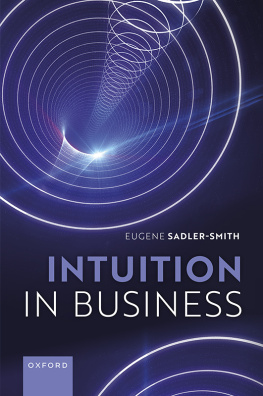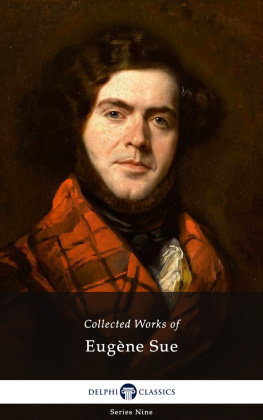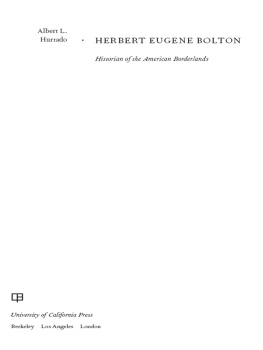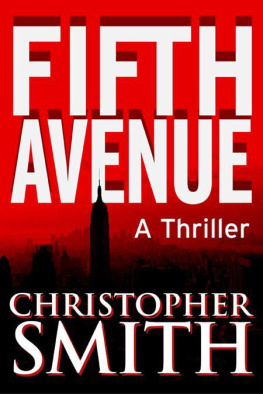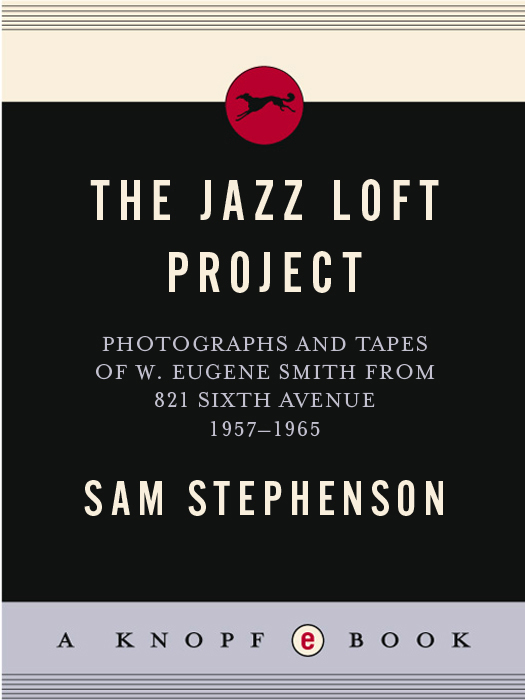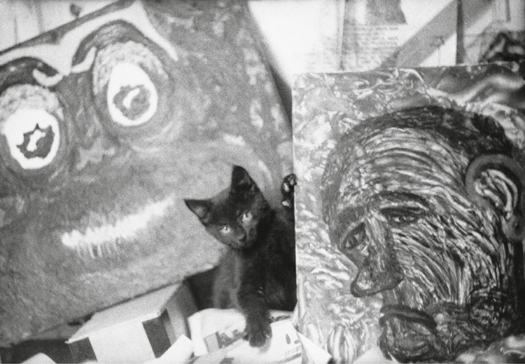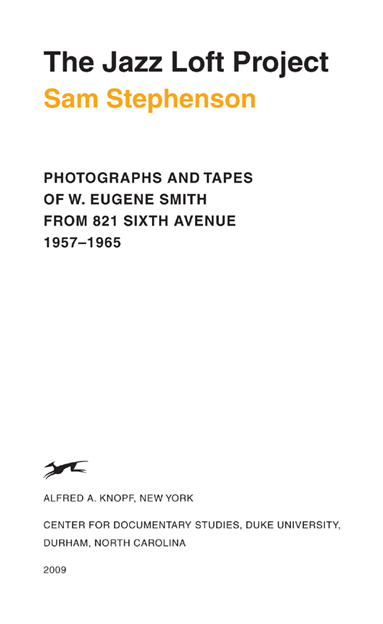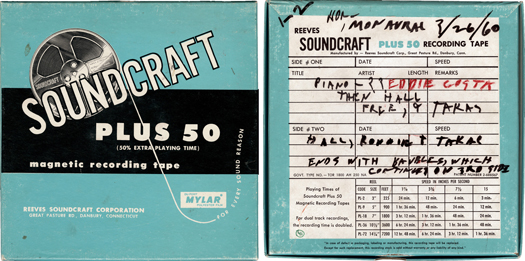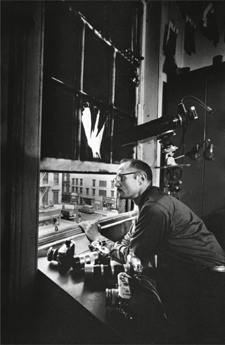This is a Borzoi Book
Published by Alfred A. Knopf
Copyright 2009 by Sam Stephenson All rights reserved. Published in the United States by Alfred A. Knopf, a division of Random House, Inc., New York, and in Canada by Random House of Canada Limited, Toronto.
www.aaknopf.com
Knopf, Borzoi Books, and the colophon are registered trademarks of Random House, Inc.
All photographs and tape boxes, unless otherwise indicated, are courtesy of the W. Eugene Smith Archive, Center for Creative Photography, The University of Arizona and The Heirs of W. Eugene Smith
Grateful acknowledgment is made to the following for permission to reprint previously published material:
The Edna St. Vincent Millay Society: Excerpts from Recuerdo and Renascence by Edna St. Vincent Millay, copyright 1917, 1922, 1945, 1950 by Edna St. Vincent Millay. Reprinted by permission of Elizabeth Barnett, Literary Executor, The Edna St. Vincent Millay Society.
Harvard University Press: Excerpt from Because I could not stop for Death from The Poems of Emily Dickinson: Reading Edition, edited by Ralph W. Franklin (Cambridge, Mass.: The Belknap Press of Harvard University Press), copyright 1951, 1955, 1979, 1983, 1998, 1999 by the President and Fellows of Harvard College. Reprinted by permission of Harvard University Press and the Trustees of Amherst College.
New Directions Publishing Corp.: Excerpt from The Crack-Up by F. Scott Fitzgerald, copyright 1945 by New Directions Publishing Corp. Reprinted by permission of New Directions Publishing Corp.
Library of Congress
Cataloging-in-Publication Data
Smith, W. Eugene, 19181978.
The jazz loft project : photographs and tapes of W. Eugene Smith from 821 Sixth Avenue, 19571965 / [compiled by] by Sam Stephenson.
p. cm.
eISBN: 978-0-307-96245-4
1. JazzNew York (State)New York19611970Pictorial works. 2. Jazz New York (State)New York19511960Pictorial works. 3. Jazz musiciansNew York (State)New YorkPortraits. I. Stephenson, Sam. II. Title.
ML3508.8.N5S65 2009
779.978165097471dc22 2009020875
v3.1
For my wife, Laurie Cochenour , as always,
and the Stephenson family, all twelve,
especially my father, Dr. Henry Louis Stephenson Jr. ,
who plays trumpet, and my mother,
Frances Hampton Stephenson , piano
Contents
March 26, 1960.
Musicians include Eddie Costa, Hall Overton, Ronnie Free, and Bill Takas. Photographer and Smiths assistant, Jim Karales, are talking. Tunes played are Off Minor by Thelonious Monk, Just You, Just Me from the 1929 film Marianne, and Baubles, Bangles, and Beads from the 1953 Broadway musical Kismet.
In the fall of 1977 two eighteen-wheel trucks hauled twenty-two tons of W. Eugene Smiths materials from New York City to the Center for Creative Photography (CCP) at the University of Arizona. The shipment included the photographs and tapes that form the basis of this book and the Jazz Loft Project at the Center for Documentary Studies (CDS) at Duke University. In 1998 I picked through all 1,740 of Smiths reels of tape and I noted 129 names of jazz musicians chicken-scratched by Smith on the labels. I was hooked. Since then I have visited the archive more than two dozen times and followed ensuing leads to uncover the story of Smith and 821 Sixth Avenue, New York City. I offer my deepest gratitude to CCP and to the Heirs of W. Eugene Smith for making this book possible. Special appreciation and honor are also due the Reva and David Logan Foundation of Chicago for their integral support of this project.
Prologue
January 29, 1960
W. Eugene Smith sits at the fourth-floor window of his dilapidated loft at 821 Sixth Avenue, New York City, near the corner of Twenty-eighth Street, the heart of Manhattans wholesale flower district. He peers out at the street below, several cameras at hand loaded with different lenses and film speeds. His window faces east from the west side of Sixth Avenue. The dawn light begins to rise behind the Empire State Building and other Midtown skyscrapers looming over the modest neighborhood. Three musicians stand together on the sidewalk talking and laughing. One holds an upright bass in its case, another has a saxophone case slung over his shoulder, and the other is smoking a cigarette.
It is six oclock in the morning; the temperature is a moderate thirty degrees. The musicians are going home after a nightlong jam session. Smith snaps a few pictures.
Across the street flatbed trucks unload fresh blooms for the shops that are preparing for daily business. At this time of year the local farms in Long Island, New Jersey, and Pennsylvanias Dutch country grow roses in the greenhouse while spider mums, lilies, carnations, orchids, chrysanthemums, and birds-of-paradise are imported from Florida. Smith snaps a few more pictures. Then he hears the familiar sound of quarter-inch recording tape flapping at the end of a reel on the tape machine sitting in his nearby darkroom. He walks into the darkroom and turns off the machine. He places the reel in a box and labels it Zoot Sims, Roy Haynes, Ronnie Free, Eddie DeHaas, Dave McKenna, Henry Grimes, John Mast, Fred Greenwell. January 29, 1960. He loads a new tape into the machine and presses Play and Record. The only sounds in the loft now come from a transistor radio in the corner tuned to the morning news (supporters of Fidel Castro clashed with dissenters in Central Park the day before; fifteen of New Yorks hospitals teetered on the brink of bankruptcy). Sounds from the awakening cityhonks and chugs of taxis and the Sixth Avenue buswaft through Smiths open window.
January 20, 2009
It isnt necessary to imagine too much of what happened inside 821 Sixth Avenue from 1957 to 1965. Smith documented the goings-on with more than one thousand rolls of film (roughly forty thousand exposures), both inside the building and through his fourth-floor window. He also wired the building from the sidewalk to the top (fifth) floor and made 1,740 reels of audio recordings.
For thirteen years I have been researching Smiths life and work. Once enough money was raised (more than half a million dollars) to transfer Smiths analog tapes to digital files (resulting in 5,089 compact discs of material), my colleague Dan Partridge and I began listening to them for the first time. Weve traveled to nineteen states and the District of Columbia and interviewed 330 people who passed through the loft building. We played these recordings for as many loft participants as was practical and affordable.
On December 8, 2000, I visited the saxophonist Lou Orensteen in his apartment on Fifty-fifth Street, New York City, between Eighth and Ninth avenues, where hed lived for four decades. He shared two bedrooms, a kitchen, and a small living room with his wife, Ingrid, their young daughter, LouLou, and their cat, Nadine. I took the elevator to the ninth floor and knocked on his door. Before I sat down, Orensteen handed me a slip of paper torn from a pocket-sized spiral notebook. Ive racked my brain, he said, and these are the people I keep remembering being at the loft.


